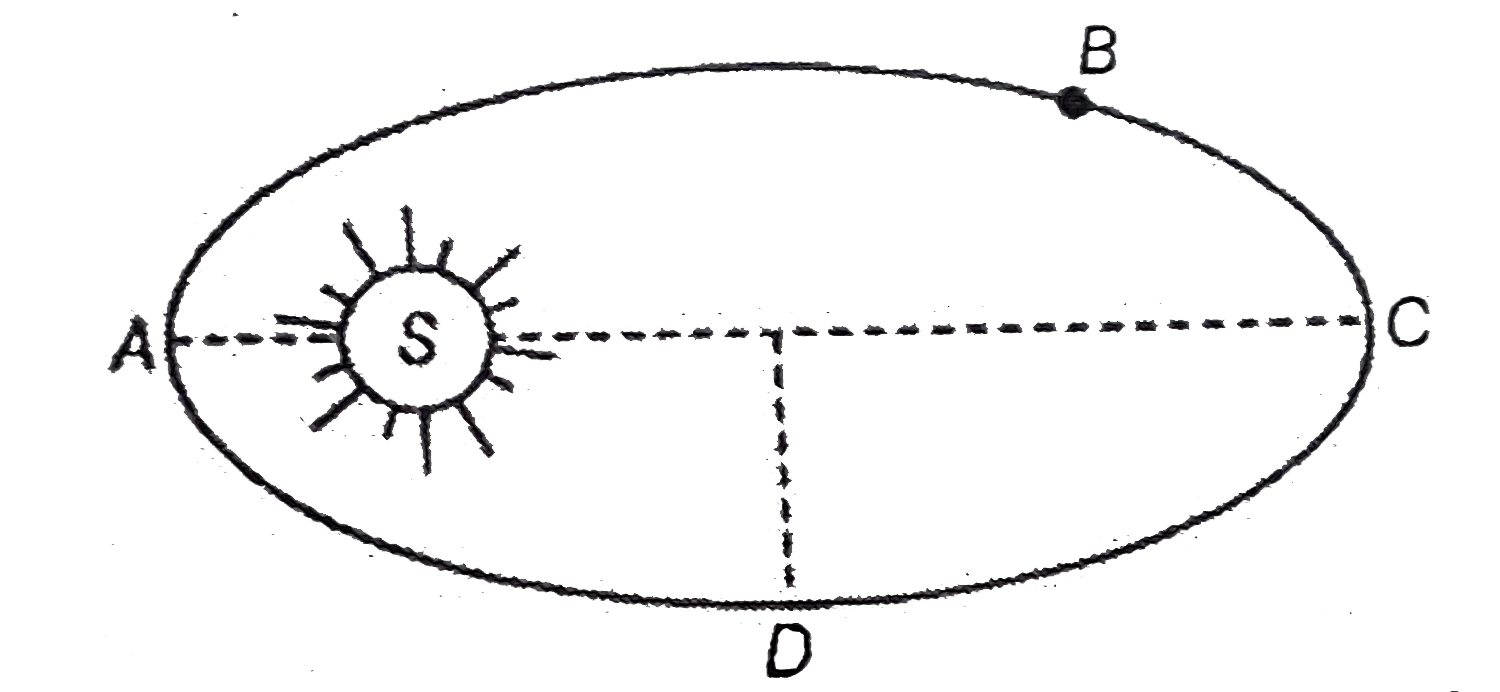If a and b are the nearest and farthest distances of a planet from the sun and the planet is revolving in an elliptical orbit, then square of the time period of revolution of that planets is directly proportional to
A
a3
B
b3
C
(a+b)3
D
(a−b)3
Video Solution
Text Solution
The correct Answer is:C
From kepler's 3rd law, T2∝r3
|
Topper's Solved these Questions
- GRAVITATIONBOOK - NARAYNACHAPTER - GRAVITATIONEXERCISE - LEVEL-II (H.W)
32 Videos
- GRAVITATIONBOOK - NARAYNACHAPTER - GRAVITATIONEXERCISE - LEVEL-V
54 Videos
- GRAVITATIONBOOK - NARAYNACHAPTER - GRAVITATIONEXERCISE - NCERT BASED QUESTIONS
26 Videos
- FRICTIONBOOK - NARAYNACHAPTER - FRICTIONEXERCISE - Passage type of questions I
6 Videos
- KINETIC THEORY OF GASESBOOK - NARAYNACHAPTER - KINETIC THEORY OF GASESEXERCISE - LEVEL-III(C.W)
52 Videos
Similar Questions
Knowledge Check
In elliptical orbit of a planet
Aangular momentum about centre of sun is constantBpotential energy is constantCkinetic energy is constantDtotal mechanical energy is constantIf r denotes the mean distance of a planet from the sun and T is the time period of planet, then
Ar∝T2/3Br∝T3/2Cr∝T1/3Dr∝TThe nearest planet to Sun is
AVenusBJupiterCMarsDMercury
A planet revolves round the sun in an elliptical orbit of semi minor and semi major axes x and y respectively. Then the time period of revolution is proportional to
View SolutionThe distance of a planet from the sun is 5 times the distance between the earth and the sun. The time period of the planet is :
View SolutionThe distance of a planet from the sun is 5 times the distance between the earth and the sun. The time period of the planet is :
View SolutionThe distance of a planet from the sun is 5 times the distance between the earth and the sun. The time period of the planet is
View SolutionA planet revolves in elliptical orbit around the sun. (see figure). The linear speed of the planet will be maximum at

View Solution
